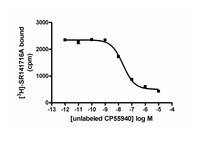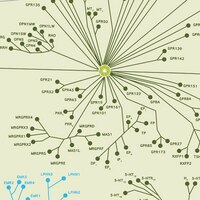HTS019M Sigma-AldrichChemiSCREEN™ CB1 Membrane Preparation
Human CB1 GPCR membrane preparation for Radioligand binding Assays & GTPγS binding.
More>> Human CB1 GPCR membrane preparation for Radioligand binding Assays & GTPγS binding. Less<<Recommended Products
Overview
| Replacement Information |
|---|
Key Spec Table
| Species | Host Cells | Protein Target |
|---|---|---|
| Human | Chem-1 | CB1 |
| References |
|---|
| Product Information | |
|---|---|
| Format | Membranes |
| Presentation | Liquid in packaging buffer: 50 mM Tris pH 7.4, 10% glycerol and 1% BSA no preservatives.Packaging method: Membranes protein were adjusted to 0.5 mg/ml in 1 ml packaging buffer, rapidly frozen, and stored at -80°C. |
| Quality Level | MQ100 |
| Physicochemical Information |
|---|
| Dimensions |
|---|
| Materials Information |
|---|
| Toxicological Information |
|---|
| Safety Information according to GHS |
|---|
| Safety Information |
|---|
| Storage and Shipping Information | |
|---|---|
| Storage Conditions | Maintain frozen at -70°C for up to 2 years. Do not freeze and thaw. |
| Packaging Information | |
|---|---|
| Material Size | 200 assays |
| Transport Information |
|---|
| Supplemental Information |
|---|
| Specifications |
|---|
| Global Trade Item Number | |
|---|---|
| Catalogue Number | GTIN |
| HTS019M | 04053252624063 |
Documentation
Protocols
| Title |
|---|
| Assembly of a Competition Binding Curve |
ChemiSCREEN™ CB1 Membrane Preparation MSDS
| Title |
|---|
ChemiSCREEN™ CB1 Membrane Preparation Certificates of Analysis
Data Sheet
| Title |
|---|
| CHEMISCREEN¿ MEMBRANE PREPARATION RECOMBINANT HUMAN CB%26lt;sub%26gt;1%26lt;/sub%26gt; CANNABINOID RECEPTOR - Data Sheet |
















